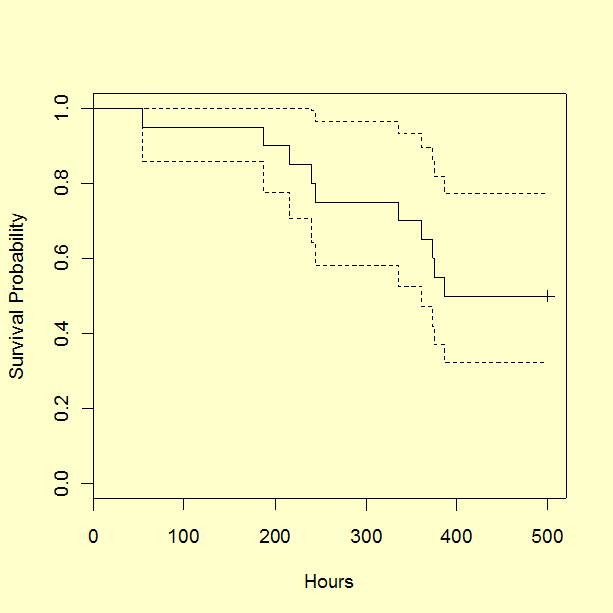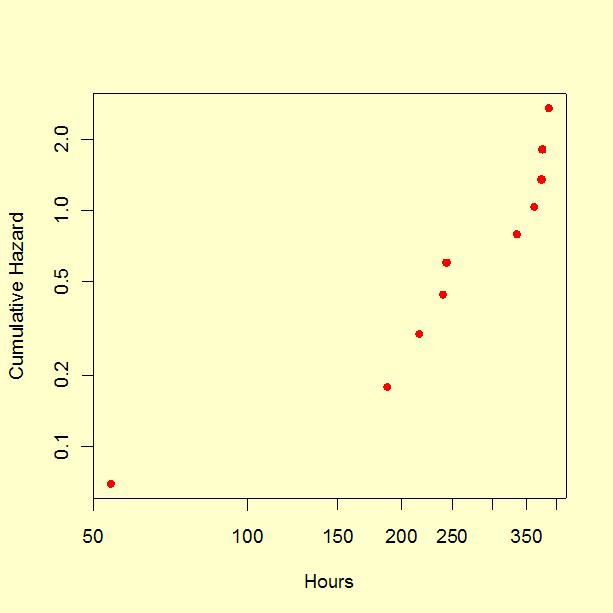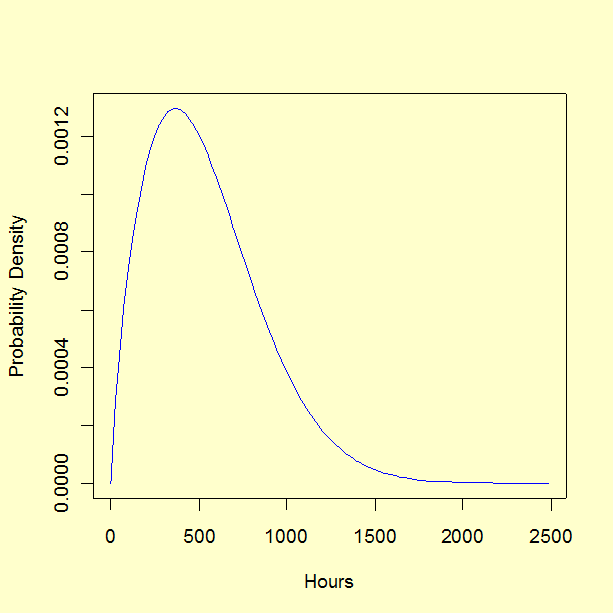8.4. Reliability Data Analysis
8.4.1. How do you estimate life distribution parameters from censored data?
8.4.1.3. |
A Weibull maximum likelihood estimation example |
The recorded failure times were 54, 187, 216, 240, 244, 335, 361, 373, 375, and 386 hours, and 10 units that did not fail were removed from the test at 500 hours. The data are summarized in the following table.
Time Censored Frequency
54 0 1
187 0 1
216 0 1
240 0 1
244 0 1
335 0 1
361 0 1
373 0 1
375 0 1
386 0 1
500 1 10
First, we generate a survival curve using the Kaplan-Meier method and a Weibull probability plot. Note: Some software packages might use the name "Product Limit Method" or "Product Limit Survival Estimates" instead of the equivalent name "Kaplan-Meier".


Next, we perform a regression analysis for a survival model assuming that failure times have a Weibull distribution. The Weibull characteristic life parameter (\(\eta\)) estimate is 606.5280 and the shape parameter (\(\beta\)) estimate is 1.7208.
The log-likelihood and Akaike's Information Criterion (AIC) from the model fit are -75.135 and 154.27. For comparison, we computed the AIC for the lognormal distribution and found that it was only slightly larger than the Weibull AIC.
Lognormal AIC Weibull AIC
154.39 154.27

Based on the estimates of \(\eta\) and \(\beta\), the lifetime expected value and standard deviation are the following. $$ \begin{eqnarray} \hat{\eta} &=& 606.5280 \\ \\ \hat{\beta} &=& 1.7208 \\ \\ \hat{\mu} &=& \hat{\eta} \cdot \Gamma \left( 1 + 1/\hat{\beta} \right) = 540.737 \,\, \mbox{hours}\\ \\ \hat{\sigma} &=& \hat{\eta} \, \sqrt{\Gamma \left( 1+2/\hat{\beta} \right) - \left( \Gamma \left(1+1/\hat{\beta} \right) \right)^{2}} = 323.806 \,\, \mbox{hours} \end{eqnarray} $$ The greek letter, \(\Gamma\), represents the gamma function.
The analyses in this section can can be implemented using R code.

